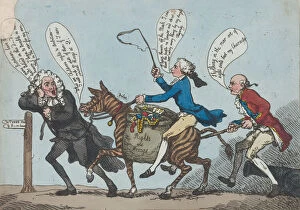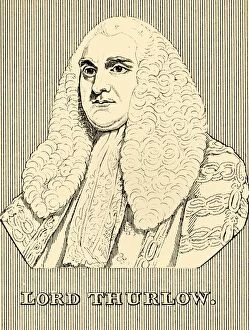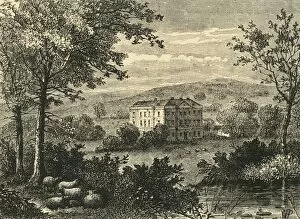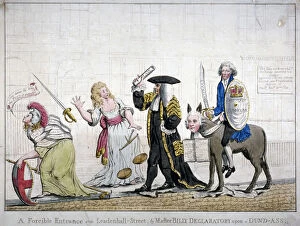Lord Edward Thurlow Collection
Lord Edward Thurlow, a prominent figure in British politics during the late 18th century, was known for his controversial role in various political events
All Professionally Made to Order for Quick Shipping
Lord Edward Thurlow, a prominent figure in British politics during the late 18th century, was known for his controversial role in various political events. In January 1789, he faced what became known as "The Pitt Fall, " a significant setback that tested his resilience and determination. This event, depicted by Frederick George Byron, captured the moment when Lord Thurlow had to navigate through challenging circumstances. Despite this setback, Lord Thurlow's influence remained strong. Francesco Bartolozzi's portrait of him from 1782 showcases his dignified presence and intellectual prowess. He was often seen as a key player in shaping political decisions and policies of the time. "The Modern Egbert, or The King of Kings" cartoon from January 8th, 1789 humorously portrays Lord Thurlow amidst power struggles within Parliament. It highlights the complexities and intrigues surrounding his involvement in national affairs. Another artwork titled "The Q. A. Loaded With The Spoils of India and Britain" depicts Lord Thurlow's connection to colonialism and trade with India during that era. His involvement in these matters raised questions about ethics and fairness. In March 1784, Thomas Rowlandson illustrated two contrasting aspects of Lord Thurlow's career: "The State Auction" showcased his engagement with financial matters while "The Drum Major of Sedition" hinted at accusations against him regarding incitement to rebellion. One intriguing piece titled "Secret Influence Directing The New P-l-t [Parliament]" suggests hidden forces influencing political decision-making processes in May 1784. This hints at controversies surrounding Lord Thurlow's actions within Parliament during this period. Thomas Rowlandson's satirical drawing called "State Butchers" from January 28th, 1789 mocks politicians involved in corrupt practices; it is likely that Lord Thurlow was among those targeted due to his association with such activities. Lord Thurlow's legacy extended beyond politics.













